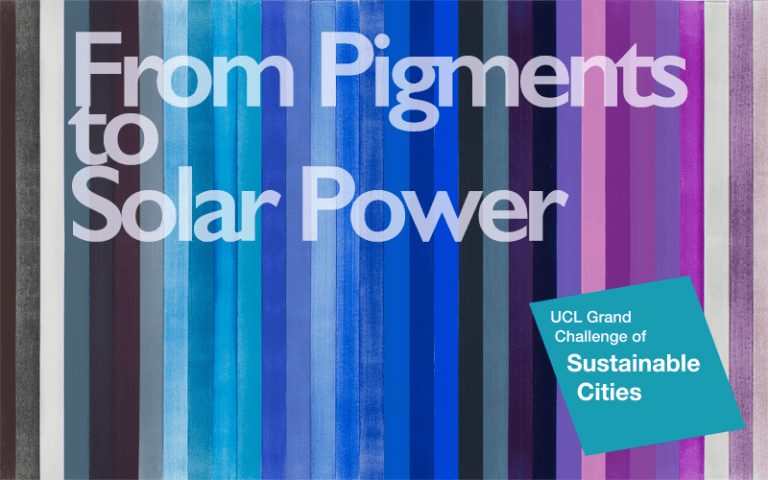From Pigments to Solar Power
UCL Chemistry, Earth Sciences and the Slade School of Fine Art, 2018
From Pigments to Solar Power , organised by Jo Volley, was a collaboration between chemistry, geology and art at UCL. It aimed to increase our understanding of sustainable materials for solar cells.
Dr Hugo Bronstein (chemist, UCL Chemistry) and Dr Ruth Siddall (geologist and pigment analyst, UCL Earth Sciences) together with Onya McCausland (artist, Slade School of Fine Art, UCL) and Jo Volley (artist, Director of Special Projects and of the Material Research Project, Slade School of Fine Art) explored the potential for solar power within the colour indigo.
Materials such as indigo, which can effectively be ‘farmed’, could allow for the production of much cheaper solar panels. Furthermore, because indigo is an ‘organic’ compound (chemists use this term for anything that is made up predominantly of carbon and hydrogen) it tends to be lightweight and flexible meaning that large solar panels could be produced very cheaply. It is tempting to think of a scenario where people would farm indigo, which could then be used to generate electrical power cleanly and cheaply.
The final results of the venture are included in a small publication, ‘From Pigments to Solar Power, UCL (2018, paper, pigment, ink), which comprises a celebration of creative thinking as well being as a thing of beauty, and very much in the spirit of the interdisciplinary and imaginative research that is part of the tradition of UCL.
During the process the project team consulted with The Woad Centre, Norfolkand and drew upon the expertise of Colart. The initiative was awarded a grant from the Grand Challenge of Sustainable Cities in 2015-16.
In 2017 Jo Volley and Onya McCausland were commended in the UCL Provost’s Spirit of Enterprise Awards for their work with pigments.
 Close
Close



